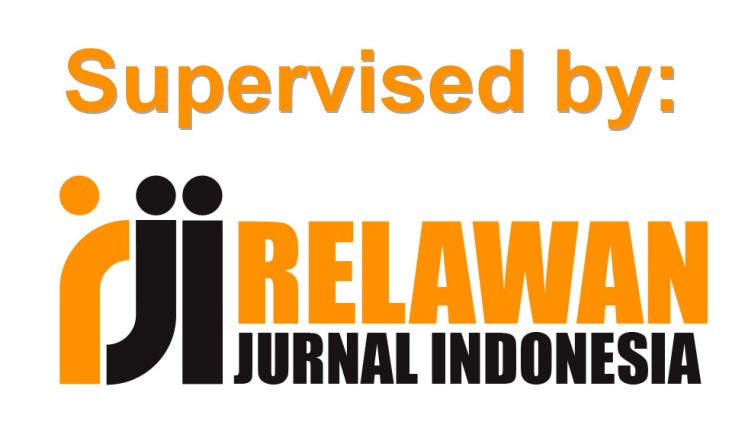Sistem Pakar Diagnosa Virus Corona Dengan Metode Naïve Bayes
Abstract
Humans being are faced with non-natural disasters which have bad effect for population on the world. This non-natural disaster is called Corona Virus Disease (COVID-19). This COVID-19 will become a pandemic in 2020. This types of COVID-19 is coming from the Orthocronavirinae. It belongs to the Coronaviridae and the Nidovirales. This type of that virus has caused some disease to birds, mammals and also human being. Therefore, the research was conducted. The result of this research will give the information about system which related the classification human being according to their transmission to the body. This research used naïve bayes method. The result of this research is diagnostic system with the level of accuracy 94%. Thus, COVID-19 diagnostic expert system used to know the level of COVID -19 infections to human being. It can help the user knowing the next treatment.
Keywords
Full Text:
PDFReferences
V. No and N. Mona, “Konsep Isolasi Dalam Jaringan Sosial Untuk Meminimalisasi Efek Contagious (Kasus Penyebaran Virus Corona Di Indonesia),” J. Sos. Hum. Terap., vol. 2, no. 2, pp. 117–125, 2020.
J. Singla, D. Grover, and A. Bhandari, “Medical Expert Systems for Diagnosis of Various Diseases,” Int. J. Comput. Appl., vol. 93, no. 7, pp. 36–43, 2014.
L. R. Fleaih, “Expert system for Diagnosing Kidney diseases,” Int. J. Comput. Technol., vol. 14, no. 3, pp. 5517–5528, 2015.
A. Hananti, “Ketahui Perbedaan COVID-19 dengan SARS dan MERS,” 2020. [Online]. Available: https://www.alodokter.com/ketahui-perbedaan-covid-19-dengan-sars-dan-mers.
M. D. C. Pane, “SARS,” 2020. [Online]. Available: https://www.alodokter.com/sars.
J. S. M. Peiris et al., “Coronavirus as a possible cause of severe acute respiratory syndrome,” Lancet, vol. 361, no. 9366, pp. 1319–1325, 2003.
Admin, “Middle East Respiratory Syndrome (MERS).” [Online]. Available: https://covid19.kemkes.go.id/penyakit-virus/middle-east-respiratory-syndrome-mers/. [Accessed: 07-Jul-1BC].
A. Zumla, D. S. Hui, and S. Perlman, “Middle East respiratory syndrome,” Lancet, vol. 386, no. 9997, pp. 995–1007, 2015.
M. F. A. Saputra, T. Widiyaningtyas, and A. P. Wibawa, “Illiteracy Classification Using K Means-Naïve Bayes Algorithm,” JOIV Int. J. Informatics Vis., vol. 2, no. 3, p. 153, 2018.
R. Anusha and A. Prof, “Predicting t he Student ’ s Preference Between Conventional Learning and E-Learning,” vol. 29, no. 4, pp. 5917–5922, 2020.
U. Erkan and L. Gökrem, “the Classification of the Students Success Via the Informations Existing in E-School System,” Int. J. Educ. Res., vol. 4, no. 4, pp. 225–232, 2016.
DOI: http://dx.doi.org/10.30646/tikomsin.v9i1.553
Refbacks
- There are currently no refbacks.
Editorial Office :
TIKomSiN : Jurnal Teknologi Informasi dan Komunikasi Sinar Nusantara
Published by STMIK Sinar Nusantara Surakarta
Address KH Samanhudi 84 - 86 Street, Laweyan Surakarta, Central Java, Indonesia
Postal Code: 57142, Phone & Fax: +62 271 716 500
Website: https://p3m.sinus.ac.id/jurnal/index.php/TIKomSiN
Email: tikomsin @ sinus.ac.id

This work is licensed under a Creative Commons Attribution-NonCommercial-ShareAlike 4.0 International License.










